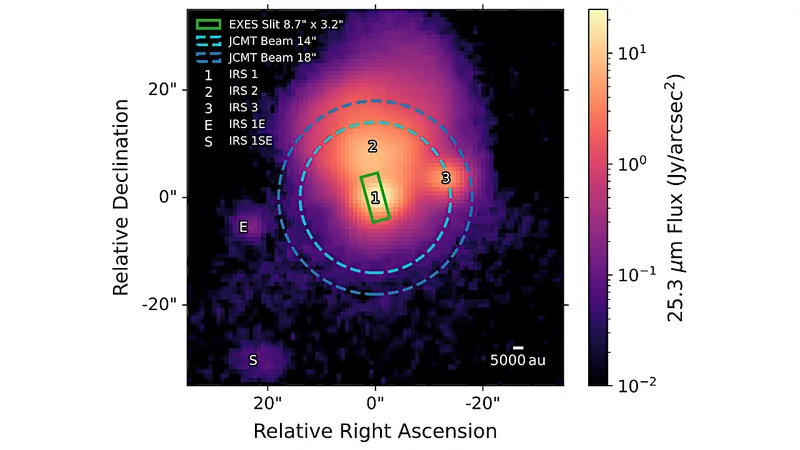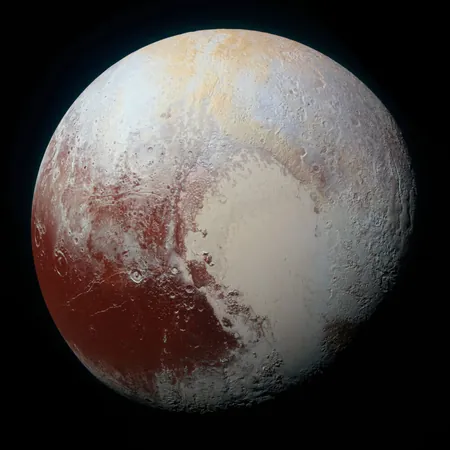
Breakthrough in Astrophysics: 25 µm Interstellar Methanol Discovered!
2025-08-04
Author: Jia
An Astounding First: Methanol Detected in Space
In a groundbreaking achievement, scientists have made the first-ever detection of methanol (CH₃OH) in the torsional band around 25 micrometers. This thrilling discovery opens new doors in our understanding of the cosmos.
The Technique Behind the Discovery
Utilizing high-resolution mid-infrared (MIR) spectroscopy aboard the SOFIA/EXES platform, researchers identified over seventy gas-phase CH₃OH absorption lines within the spectral range of 20 to 28 micrometers. This sophisticated technique has allowed astronomers to gather critical data about the molecular composition of interstellar space.
Uncovering Hidden Secrets of NGC 7538 IRS 1
The targeted observations were made toward the massive protostar NGC 7538 IRS 1. From this, the team derived a temperature of approximately 180 K and a total column density of 2 x 10²⁷ molecules per square centimeter—results that align remarkably well with previous sub-millimeter measurements.
Dual Velocity Components Suggest Complexity
Intriguingly, both methanol and acetylene (C₂H₂) absorption lines indicated an unresolved second velocity component. This finding suggests that NGC 7538 IRS 1 may be home to multiple protostars, each contributing to the rich molecular material in two edge-on disks.
A Valuable Resource for Future Exploration
The research team has also provided an updated line list for the torsional band of methanol, derived from both laboratory work and sophisticated model calculations. This newly compiled list is expected to enhance the search for methanol in the upcoming James Webb Space Telescope (JWST) and its Mid-Infrared Instrument (MIRI) spectra.
A Collaborative Effort
This landmark study was a collaborative effort among several researchers, including Sarah L. Nickerson, Naseem Rangwala, and others, showcasing the power of teamwork in unraveling the mysteries of our universe.
Why This Matters
The detection of methanol not only enriches our understanding of chemical processes in space but also serves as a stepping stone for future explorations, possibly leading to new insights about star formation and the origins of complex organic molecules in the universe.


 Brasil (PT)
Brasil (PT)
 Canada (EN)
Canada (EN)
 Chile (ES)
Chile (ES)
 Česko (CS)
Česko (CS)
 대한민국 (KO)
대한민국 (KO)
 España (ES)
España (ES)
 France (FR)
France (FR)
 Hong Kong (EN)
Hong Kong (EN)
 Italia (IT)
Italia (IT)
 日本 (JA)
日本 (JA)
 Magyarország (HU)
Magyarország (HU)
 Norge (NO)
Norge (NO)
 Polska (PL)
Polska (PL)
 Schweiz (DE)
Schweiz (DE)
 Singapore (EN)
Singapore (EN)
 Sverige (SV)
Sverige (SV)
 Suomi (FI)
Suomi (FI)
 Türkiye (TR)
Türkiye (TR)
 الإمارات العربية المتحدة (AR)
الإمارات العربية المتحدة (AR)